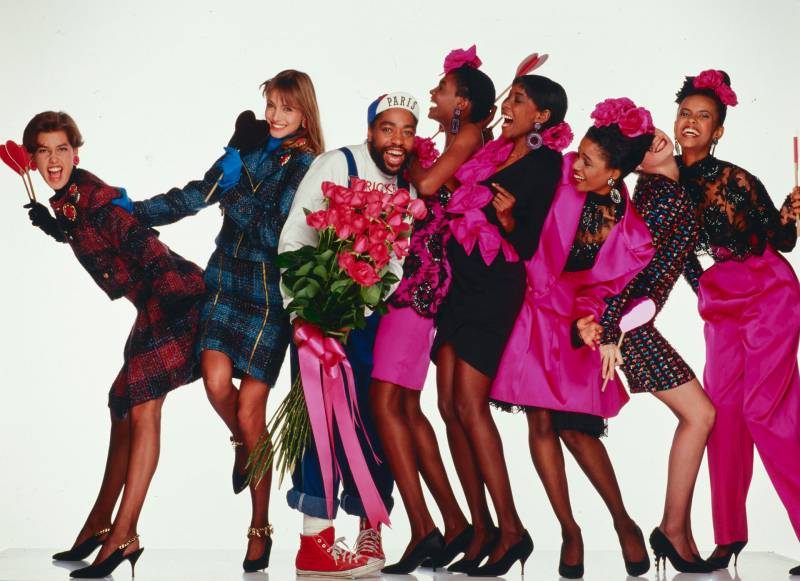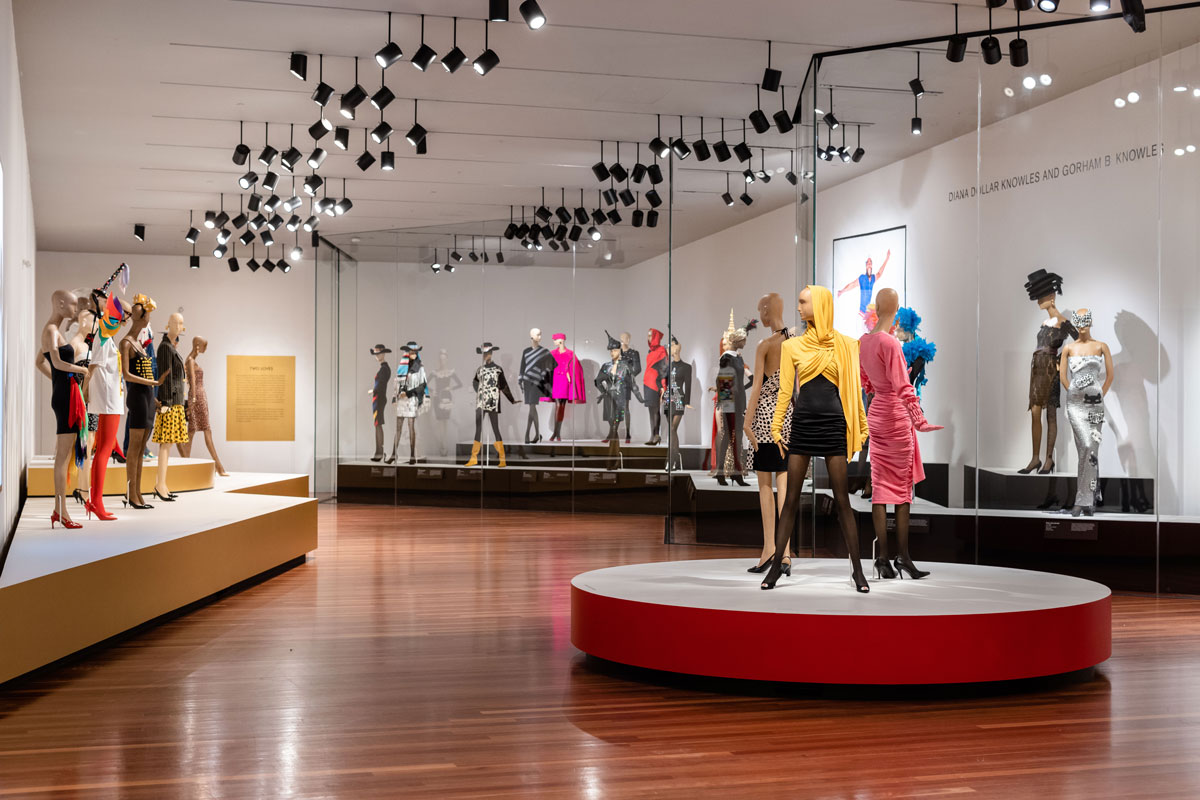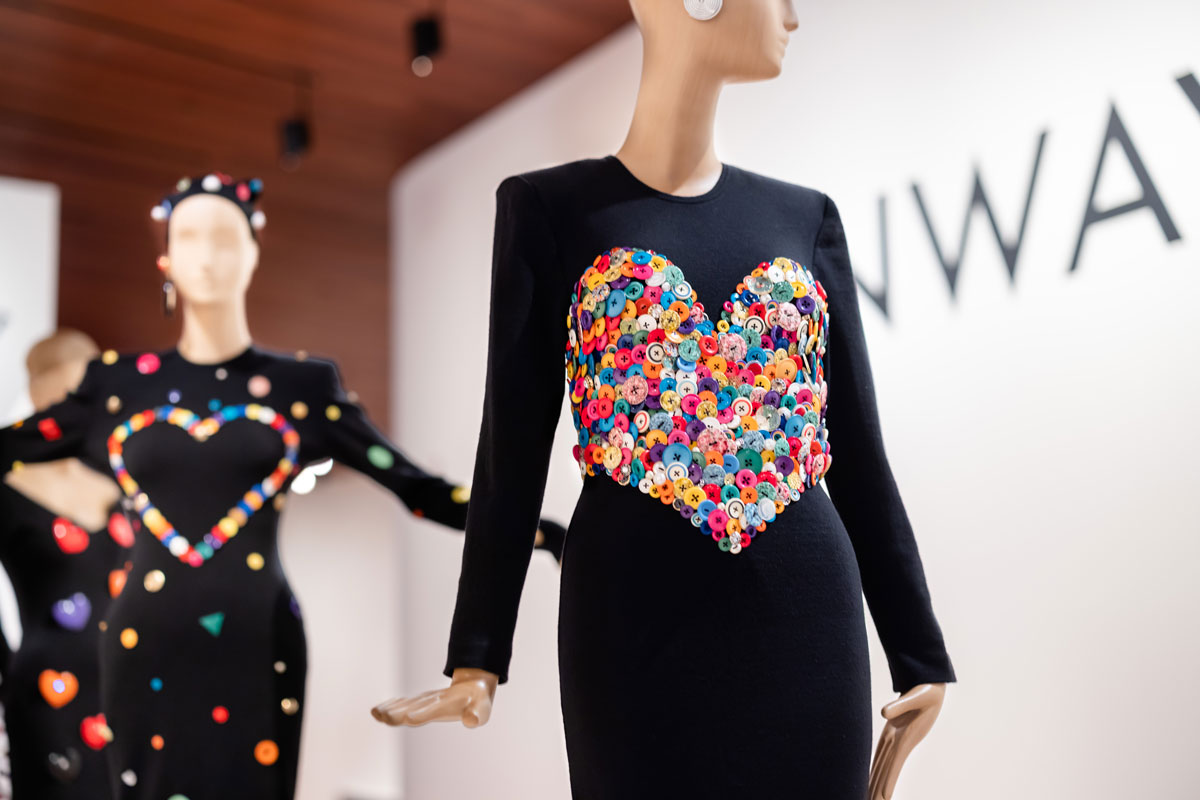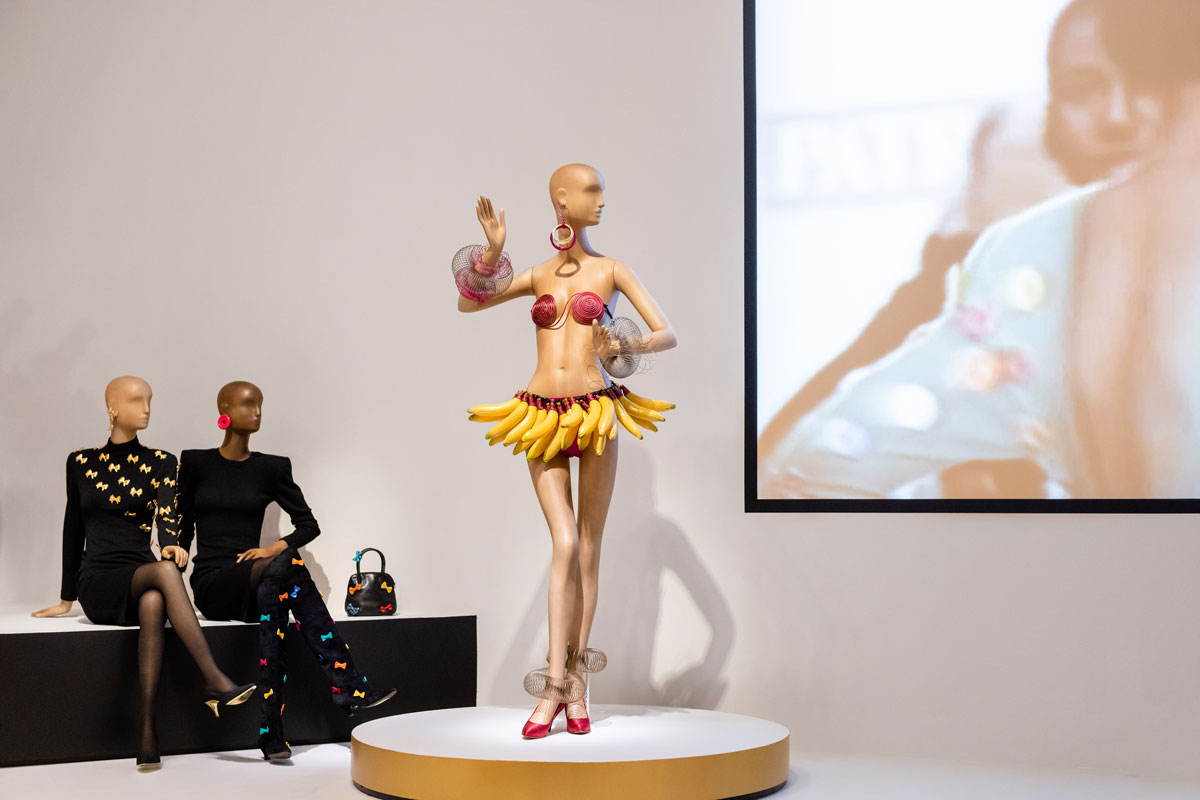A black, floor-length dress adorned with buttons unsubtly spelling “I Love Patrick Kelly” greets visitors as they enter the de Young’s Patrick Kelly: Runway of Love exhibition. A leopard-print coat in the mannequin’s hand hits the floor luxuriantly, the entire outfit (from the designer’s Fall/Winter 1988–1989 show) emblematic of the unabashed enthusiasm Patrick Kelly put into his fashion—the same enthusiasm we can’t help but feel while looking at his work.
Revisiting the Gleeful Joy of Patrick Kelly’s Heart-Filled Fashion

Hearts, buttons, Paris, even racist memorabilia appear in the Mississippi-born designer’s fashion featured in Runway of Love, which covers his creations between 1984 and 1990. Archival video positioned throughout the exhibition animates the static mannequins, featuring glamorous 1980s models like Naomi Campbell gleefully walking down the runway in his designs.
Runway of Love, co-organized by the Philadelphia Museum of Art and on view at the de Young through April 24, 2022, was put together with the help of Kelly’s former partner, Bjorn Guil Amelan, who has been dedicated to preserving Kelly’s work and legacy. The first American designer to be admitted into the Chambre Syndicale du Prêt-à-Porter des Couturiers et des Créateurs de Mode, France’s prestigious fashion association, Kelly died from AIDS-related complications in 1990, abruptly ending a promising career when he was just 35 years old.

I remember seeing pictures of Kelly’s clothes on Tumblr and Twitter in my adolescence. At the time, the images felt like a history lesson in the changing styles of fashion—Kelly’s ’80s designs were so different from what I saw on runways in the 2010s. But experiencing the clothes in person and learning more about the inspiration behind the work made me appreciate them so much more.
Now, I see his influence on current fashions. In the “Hot Couture” section of the exhibit, a “Nail” ensemble from Kelly’s Fall/Winter 1988 collection has metal nails embroidered into both the skirt and the sweater. Nails spike out from the wrist flares of matching gloves, accompanied by nail earrings and nail bracelets. The look is striking. I was reminded of the Beaumont, Texas artist Teezo Touchdown, who wears nails in his hair wherever he goes.
Kelly’s life experiences flowed directly into his fashion. The multicolored buttons that appear throughout his early work pay homage to his grandmother Ethel Rainey, who would sew different colored buttons onto his childhood clothes when the originals fell off. In Kelly’s hands, the buttons become about creating art in any situation, and about letting one’s own life flow into that art.
Kelly’s work was never a mistake, everything he did was intentional and open to interpretation. “He never explained; he did,” Aleman says.

Themes from his Southern upbringing appear in less comforting ways. Symbols of the racism he experienced while living through segregation found their way into this work; he began collecting racist memorabilia after he moved to Paris in 1979. In the “Mississippi in Paris” section of the exhibit, an outfit from Kelly’s Spring/Summer 1986 collection features a white lace shirt and matching skirt, accessorized with a necklace and earrings made of roses and Black baby dolls. Amelan remembers how he once gave Kelly an ashtray for his birthday, decorated with what Amelan didn’t realize was a racist image. Instead of taking offense, Kelly incorporated the image into his work. He replied to criticism with, “If we can’t deal with where we’ve been, it’s gon’ to be hard to go somewhere.”
Kelly was also heavily influenced by the artists and designers who came before him. The matching wool sets from his Fall/Winter 1988 collection resemble the iconic tweed sets of Chanel. On the wall opposite his designs, photos show Kelly adopting Coco Chanel-like poses. Dancer Josephine Baker, another Black American who sought out creative freedom in Paris, was also one of Kelly’s inspirations. Baker’s famous banana skirt appeared in Kelly’s Fall/Winter 1986 collection, accompanied by a pink spiral wire bra top and matching pink shoes, an update to the outfit Baker wore in her “Banana Dance” performance. In a video from the fashion show the model in this design dances down the runway.

Kelly’s last show, 1989’s “Lisa Loves the Louvre,” was based on the idea of the Mona Lisa inviting the designer to her “house” (the Louvre). Models wore T-shirt dresses with red stockings. Kelly placed himself in a frame, posing like the Mona Lisa. At the de Young, the centerpiece of this section of the exhibition is a placeholder for Kelly himself: his infamous overalls, worn with a heart-covered shirt and a flipped-brim cap that reads “Paris.”
For a show about fashion design, Runway of Love is full of such snippets of text. The words “Nothing is impossible” appear on a window overlooking the exhibition, the same words etched into Kelly’s tombstone at the Père Lachaise Cemetery in Paris. For a brief moment in Kelly’s too-short life, these words rang true. Now, his clothes speak for themselves, conveying his spirit of love and joy through the language of fashion.

‘Patrick Kelly: Runway of Love’ is on view at San Francisco’s de Young Museum through April 24, 2022. Details here.

